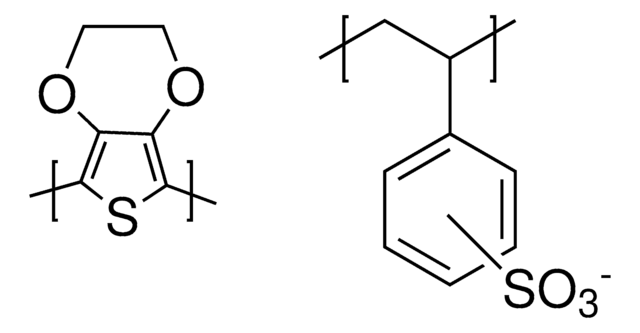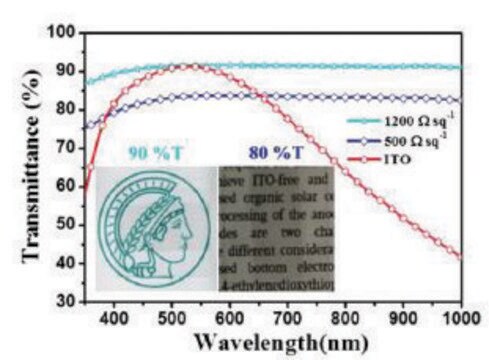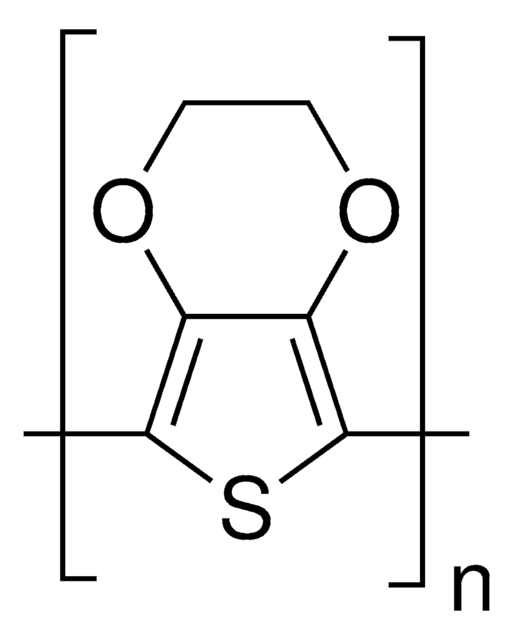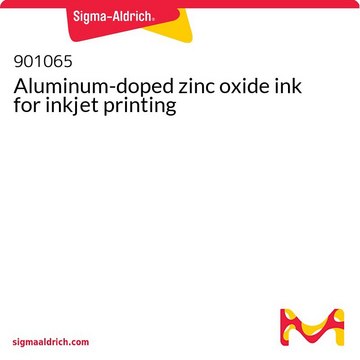739316
PEDOT:PSS
conductive inkjet ink, 0.8% aqueous dispersion
Sinónimos:
Orgacon™ IJ-1005, PEDOT:PSS, Poly(2,3-dihydrothieno-1,4-dioxin)-poly(styrenesulfonate)
About This Item
Productos recomendados
Nombre del producto
Poly(3,4-ethylenedioxythiophene)-poly(styrenesulfonate), 0.8% in H2O, conductive inkjet ink
Nivel de calidad
Formulario
liquid
contiene
1-5% Ethanol
5-10% Diethylene glycol
características de los productos alternativos más sostenibles
Design for Energy Efficiency
Learn more about the Principles of Green Chemistry.
sustainability
Greener Alternative Product
concentración
0.8% in H2O
resistencia de la lámina
110 Ω/sq
índice de refracción
n20/D 1.340
pH
1.5-2.5
viscosidad
7-12 cP(22 °C)
densidad
0.985 g/mL at 25 °C
categoría alternativa más sostenible
, Enabling
temp. de almacenamiento
2-8°C
¿Está buscando productos similares? Visita Guía de comparación de productos
Descripción general
PEDOT:PSS has high electrical conductivity and good oxidation resistance, the properties which make it suitable for electromagnetic shielding and noise suppression. Thus, the polymeric film formed possesses high transparency throughout the visible light spectrum and even in near IR and near UV regions, displaying virtually 100% absorption from 900-2,000 nm. No absorption maximum from 400-800 nm was observed.
Aplicación
Información legal
Código de clase de almacenamiento
10 - Combustible liquids
Clase de riesgo para el agua (WGK)
WGK 2
Punto de inflamabilidad (°F)
Not applicable
Punto de inflamabilidad (°C)
Not applicable
Elija entre una de las versiones más recientes:
¿Ya tiene este producto?
Encuentre la documentación para los productos que ha comprado recientemente en la Biblioteca de documentos.
Los clientes también vieron
Artículos
A detailed article on conducting polymer materials for flexible organic photovoltaics (OPVs) applications.
New conducting and semiconducting polymers for plastic electronics
Find advantages of inorganic interface layer inks for organic electronic & other applications.
Conducting polymers such as polyaniline, polythiophene and polyfluorenes are now much in the spotlight for their applications in organic electronics and optoelectronics.
Nuestro equipo de científicos tiene experiencia en todas las áreas de investigación: Ciencias de la vida, Ciencia de los materiales, Síntesis química, Cromatografía, Analítica y muchas otras.
Póngase en contacto con el Servicio técnico





